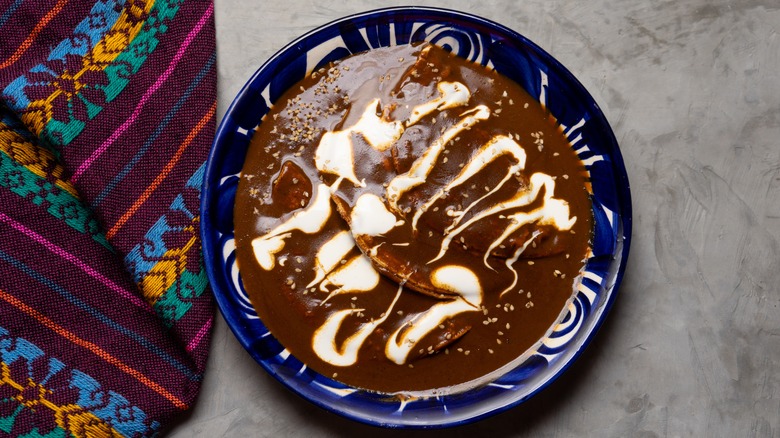The Mexican Ingredient You Can Use To Turn Down The Heat In Spicier Dishes
Traditionally, if you want to add spicy heat to a dish, you add pepper, from mild banana peppers to the very hot Carolina Reaper, and many in between. Peppers are measured with the Scoville Heat Unit (SHU). According to Taste of Home, the heat that fills the mouth when biting into spicy food is because of a chemical called capsaicin. As to be expected, the more capsaicin a pepper has, the hotter it will be. The Scoville Heat Unit scale measures the heat level of each pepper, which fall on the scale that ranges from zero SHU to more than 1.5 million SHU. A mild pepper is one that has fewer than 4,000 SHU, while medium is in the 4,000 to 15,000 SHU range, per Taste of Home. A hot pepper will be in the 15,000 to 50,000 range and very hot is more than 50,000 SHU.
But have you ever made a dish and it turned out a lot spicier than you had anticipated? Perhaps you mistook a habanero pepper for a chipotle pepper when you made a sauce and now your mouth is on fire. Don't worry — you don't need to toss out the food you worked so hard to make (and spent money on to buy ingredients). There is a simple trick to tame the heat and reassure your taste buds.
Temper the heat
If you find yourself biting into more than you can handle (literally), add some Mexican crema to cool the heat and to add a little tang to your dish (via Isabel Eats). Similar to both sour cream and French crème fraîche, Mexican crema is thinner and often used as a finishing touch to Mexican dishes, such as tacos and soups, as well as to help offset the heat of chiles. MasterClass describes Mexican crema as being sweeter than sour cream and crème fraiche. It also is milder tasting than sour cream and balances out the chipotle flavors found in spicy recipes.
To make Mexican crema, you only need heavy cream, buttermilk, fresh lime juice, and salt (Isabel Eats). It's also good for heavy or crunchy dishes, according to Chili Pepper Madness, because of its thickness. If you don't have Mexican crema on hand when cooking, Isabel Eats says you can add some lime juice to crème fraîche to make it thinner and give it a little more acidity.
So don't steer away from the spice. Embrace the heat, but temper it a bit with some Mexican crema should the heat be a bit too much.

